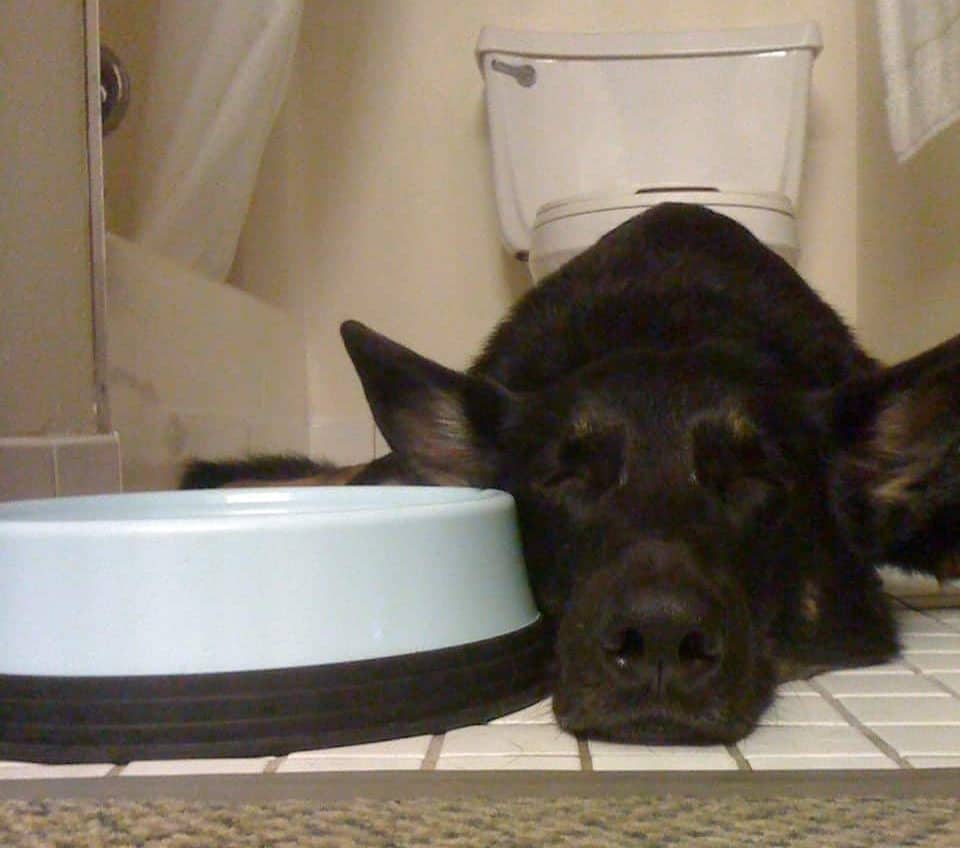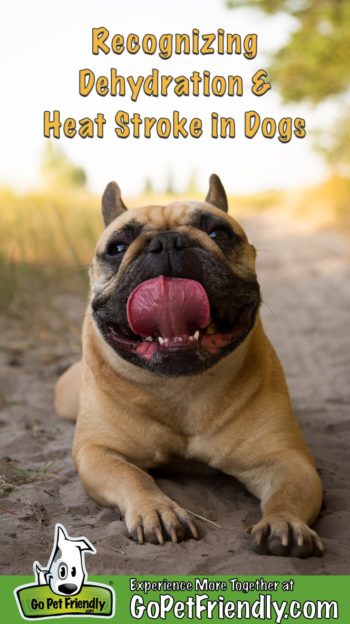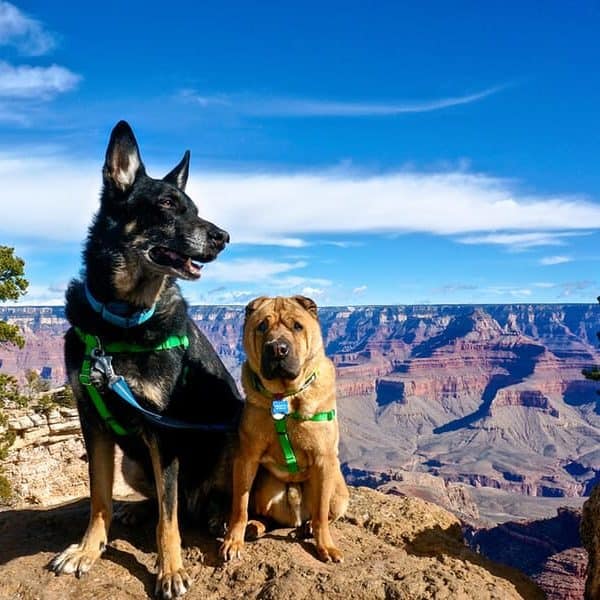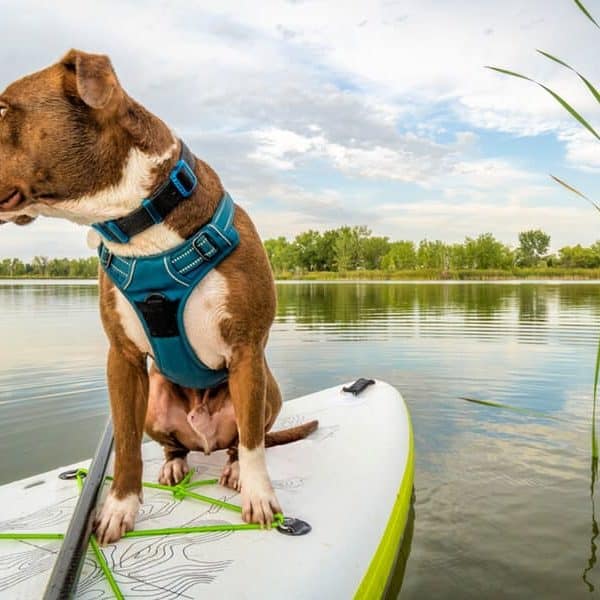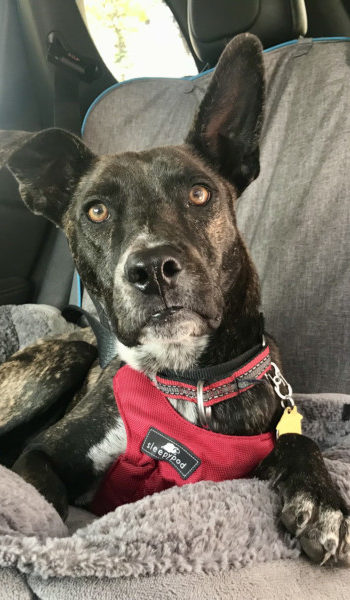Summer heat and spending time at higher elevations can both lead to dehydration for you and your dog. Know the symptoms of dehydration and heat stroke in dogs so you can watch your pet and act quickly if he starts to get sick.
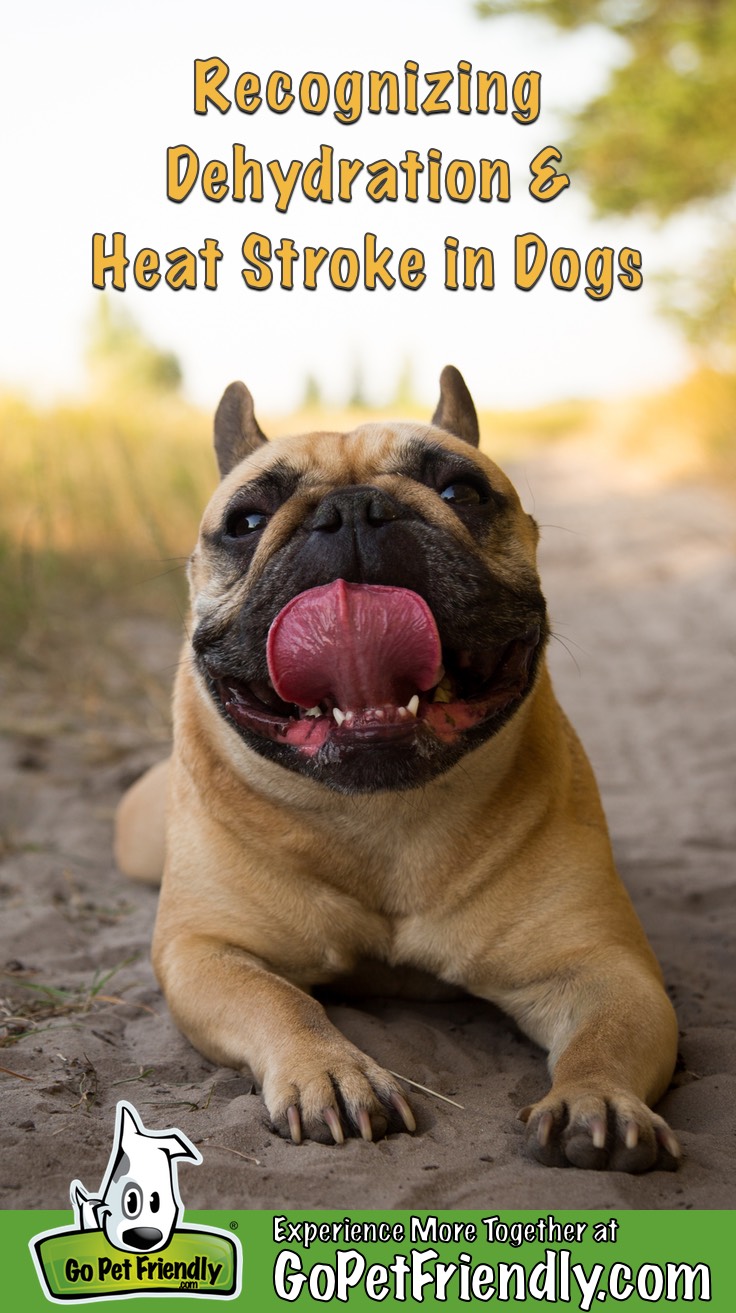
Disclosure: I am not a veterinary professional. If you suspect that your dog might be suffering from dehydration or heat stroke, call your veterinarian immediately.
One of the joys of traveling is taking a break from your normal routine. But it can also make it more difficult to monitor whether your pet is getting enough water or over-exerting himself. Sunny days, soaring temperatures, higher elevations that you’re accustomed to, high humidity, and lots of time outdoors can lead to dehydration and heat stroke in dogs.
Whether you’re driving in the car, romping at the dog park, playing on the beach, or hitting the trail, an ounce of prevention is the best cure. So, be sure to have plenty of water and give your pup lots of opportunities to get a drink.
But even with your best efforts, dogs get excited and might not want to stop their activities long enough to stay hydrated. In those cases, leash your dog for short breaks and encourage him to drink. And always keep an eye on him for any signs that he’s not feeling well.
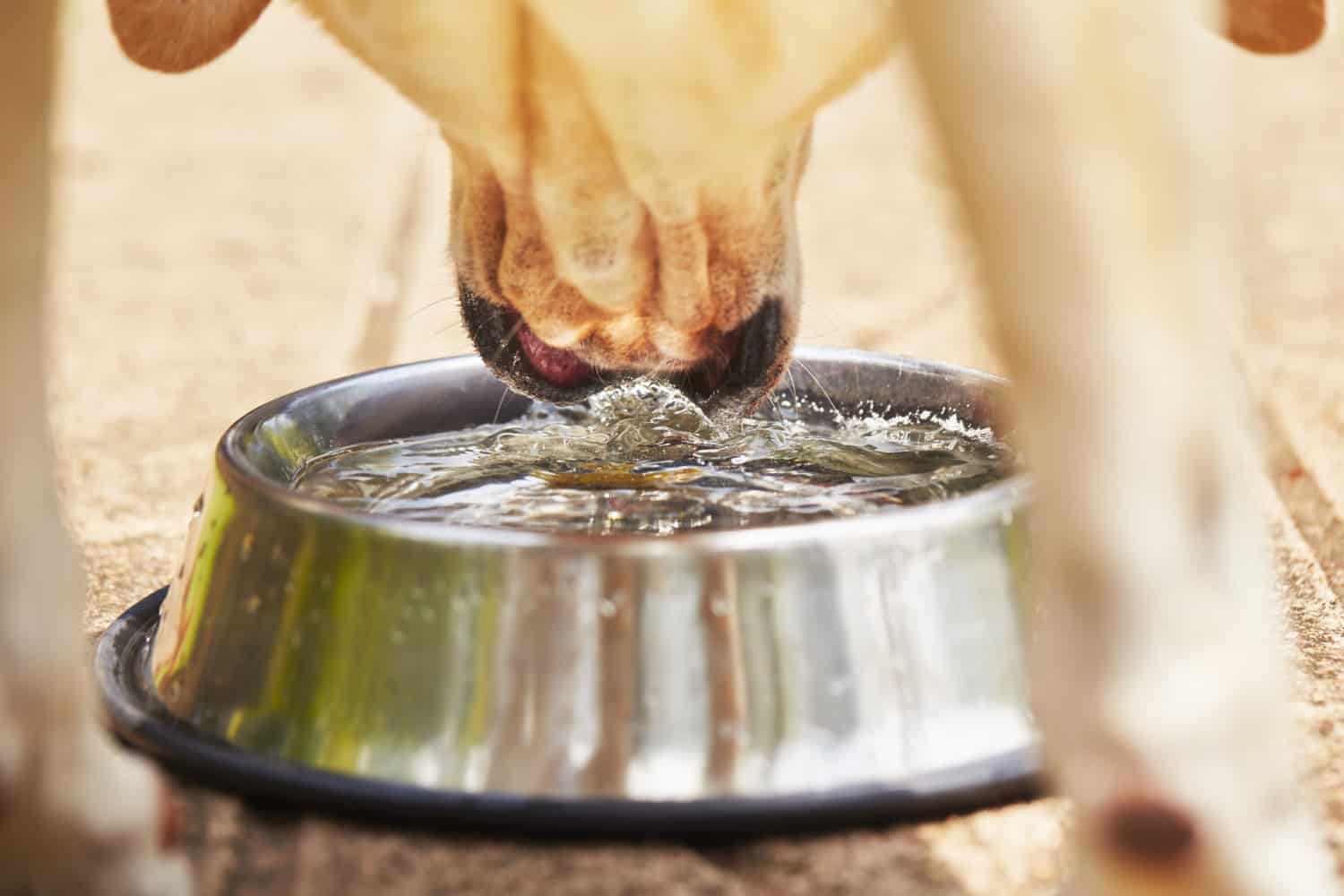
What Is Dehydration In Dogs?
Dehydration occurs when a dog does not have enough water in his body. Dogs’ bodies are about 90% water, and normal activities like panting and drooling decrease a their fluids. Just a 10% drop in fluid levels can result in serious dehydration.
Preventing You Dog From Getting Dehydrated
The best way to prevent dehydration and heat stroke in dogs is to make sure your dog drinks plenty of water. Always have enough water for you and your dog – when you’re hiking, he can even carry his own in a doggy backpack! And remember to take frequent breaks to get a drink.
READ MORE ⇒ What’s the Best Dog Backpack?
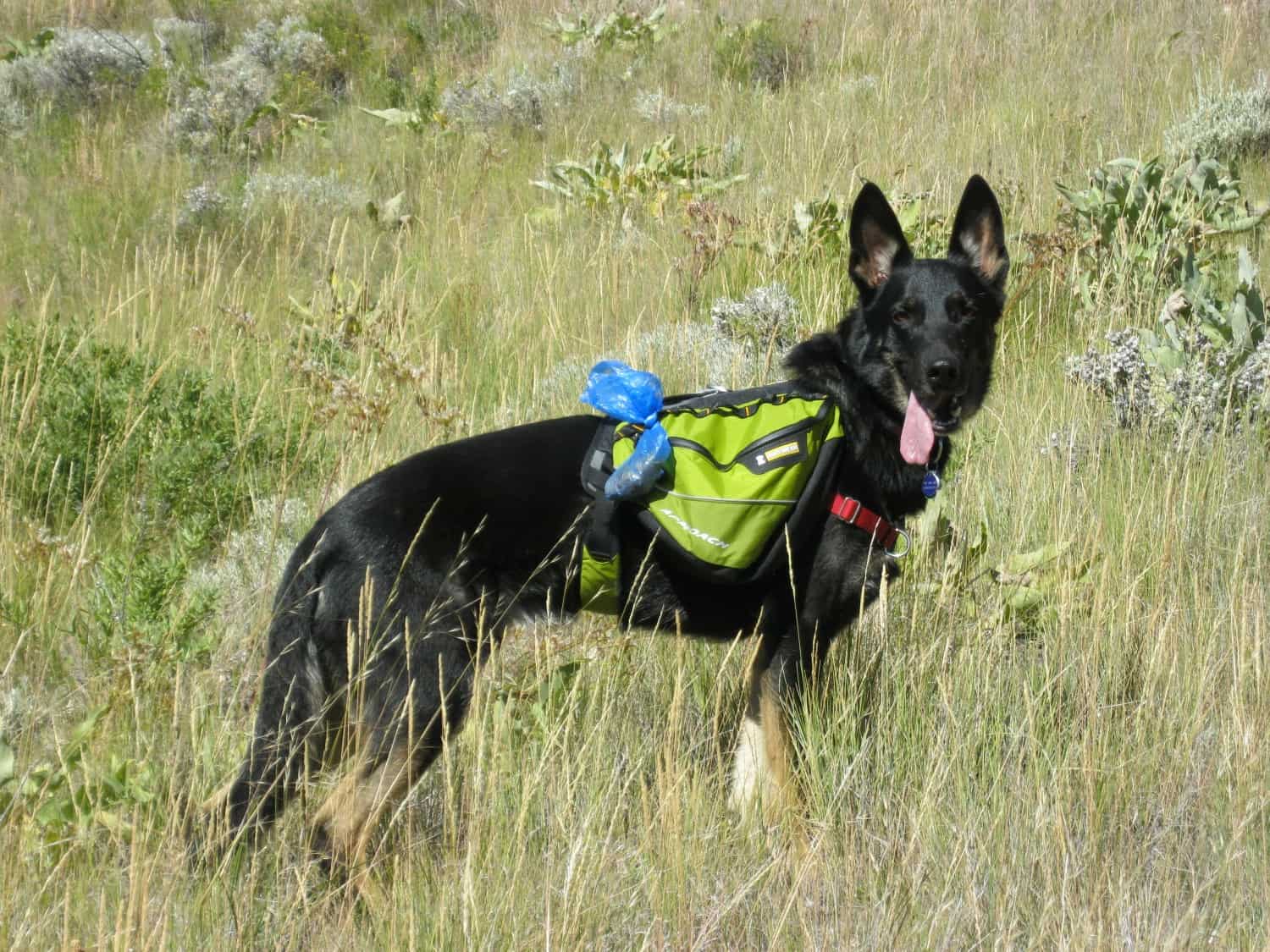
Symptoms Of Dehydration In Dogs
Dogs can’t tell you when they’re thirsty, so it’s important to have fresh, cool water available to them at all times. Still, sometimes they get busy fetching, hiking, or treeing squirrels and forget to stop for a drink. If you notice any of these symptoms, you need to take quick action to protect your dog:
- Sunken eyes
- Too much or too little urination
- Dry, sticky gums
- Lack of skin elasticity, meaning if you pick up your dog’s skin at his neck and then release it, it should pop back into place. In dehydrated dogs, the skin will remain in a ridge and the longer it stays that way the more severe the dehydration.
What To Do If Your Dog Is Showing Signs Of Dehydration
If you think your dog might be dehydrated, the primary objective is to get him more fluids.
- Move him to a shady, cool location to try to reduce the panting.
- Provide him with cool water, perhaps mixing in salt-free chicken broth or Pedialyte to encourage him to drink.
If your pup is severely dehydrated, it can be a critical emergency. Call your veterinarian or find the closest emergency veterinary hospital so that IV fluids can be administered.
READ MORE ⇒ What You Should Know About Emergency Vets (Before You Need One)

What Is Heat Stroke In Dogs?
Heat stroke in dogs is an extremely dangerous condition that occurs when a dog can no longer maintain his normal body temperature (around 101° F) by panting.
Heat and humidity increase your dog’s temperature, and at 106°F his internal organs can begin shutting down. At that point, you only have minutes to cool him, or he could suffer permanent organ damage or die.
Factors Increasing Chances Of Heat Stroke
Something as unique as your dog’s temperament can elevate his body temperature. For example, a pet that is anxious, excited, or frightened, or one that barks excessively, is more likely to get heat stroke than one that is calm.
Also, dogs with short noses, like Pugs, Bulldogs, and Shar-Pei are more likely to experience heat-related issues, because they have less tongue area to dissipate heat. Other factors that can play a part in heat stoke are:
- Direct sunshine
- High humidity
- Lack of a breeze
- Health and weight of the pet
- Thickness of the dog’s coat
- Availability of fresh water
- Recent feeding
- Dogs with short legs are also exposed to more heat radiating up from the ground
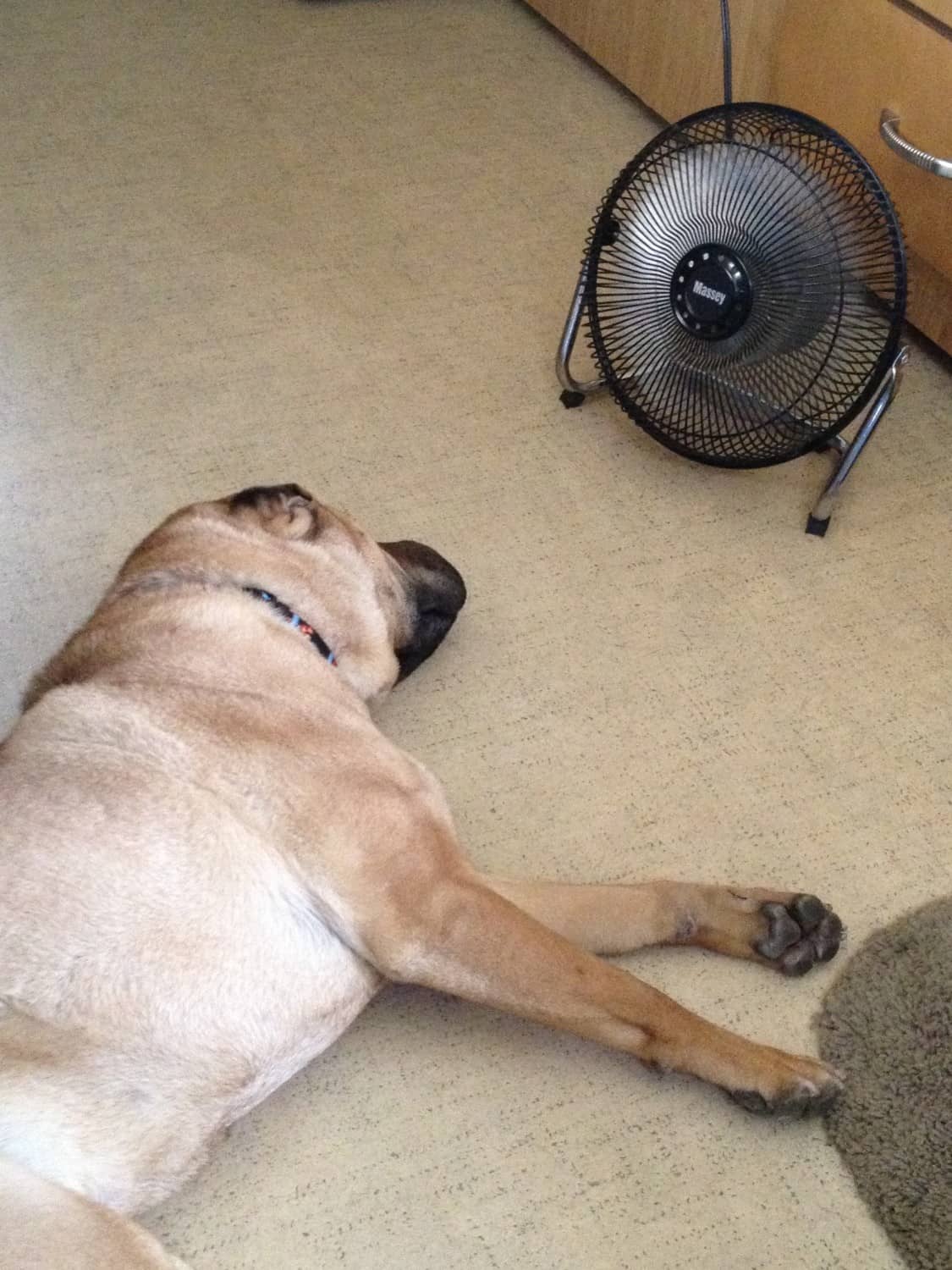
How To Help Your Dog Beat The Heat
As pet owners, it’s our responsibility to do our best to keep our pets safe from the heat. Here are some suggestions to help your dog keep his cool:
- Do not leave your pet alone in the car
- Minimize outdoor activities on hot and humid days
- Exercise in the early morning and late evening when the temperatures are cooler
- Keep your dog in a cool part of the house, like the basement or a room that is air conditioned
- Make sure your pets always have access to clean drinking water
- When your dog is outside be sure he has shade, gets a breeze, and consider a kiddie pool for him to cool off
READ MORE ⇒ Is it Illegal to Leave Your Pet Alone in the Car?
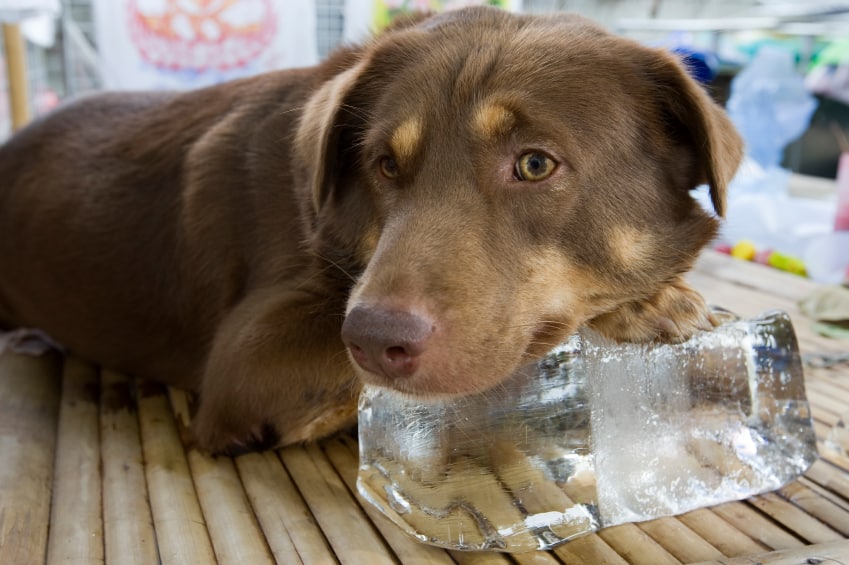
Symptoms of Heat Stroke in Dogs
Often people don’t recognize the symptoms of heat stroke and lose critical treatment time. Watch your dog closely for these signs:
- Excessive panting
- Pale gums and a bright red tongue
- Anxious or staring expression
- Disorientation and confusion
- Increased heart rate and pulse
- Thick saliva
- Vomiting
- Difficulty breathing
- Collapse
- Coma
Simply learning to check your dog’s pulse, respiration, and temperature anytime he’s not feeling well can help you assess his degree of pain, injury, or illness. And that can help you decide on a proper course of action.
READ MORE ⇒ How to Check Your Dog’s Pulse, Respiration, and Temperature
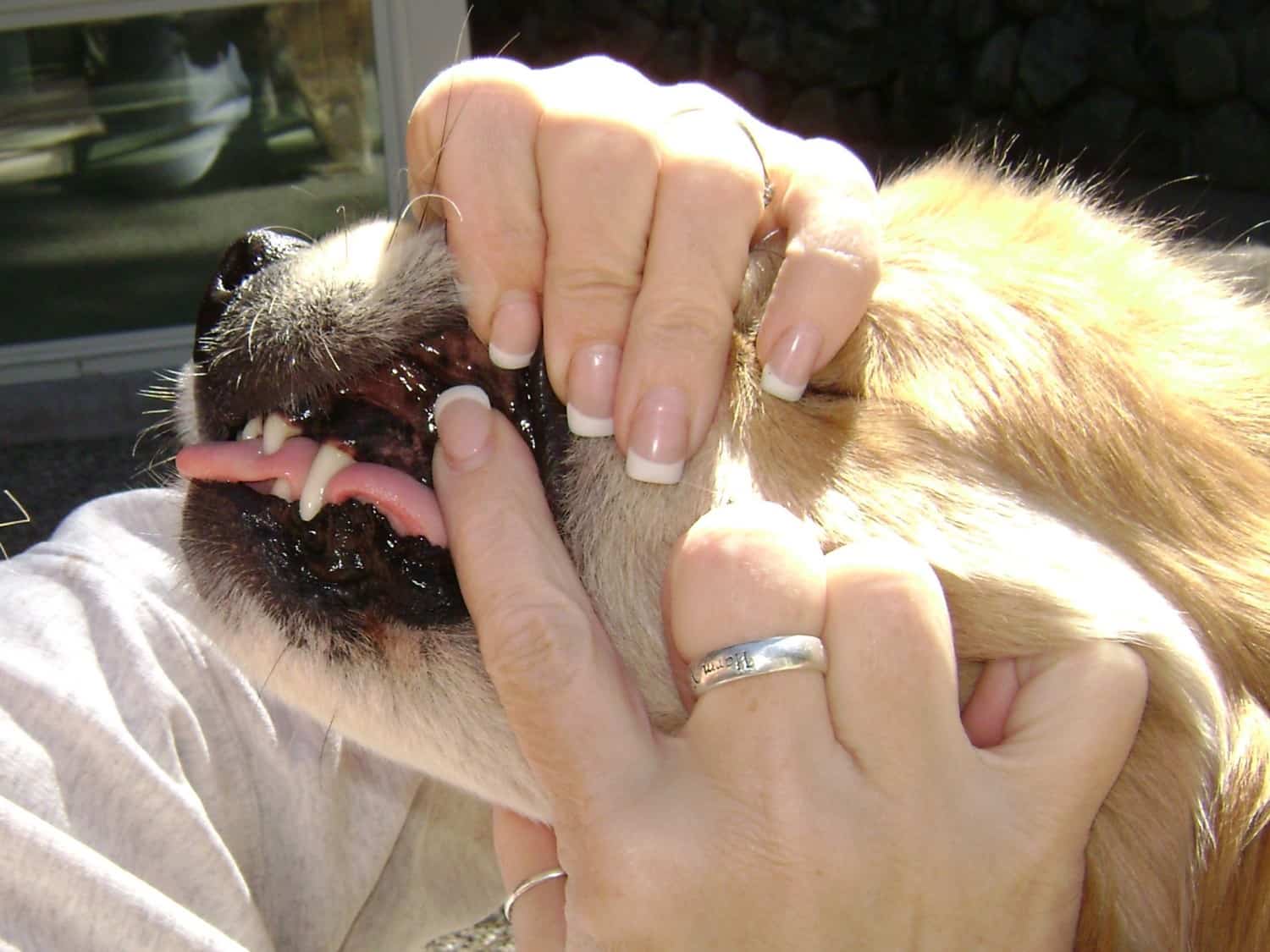
Taking and recording your dog’s vitals when he’s healthy gives you a baseline to know when something isn’t right. The difference between your dog’s normal readings and what he’s experiencing when he’s unwell could very well lead you to seek professional medical help.
Treatment For Heat Stroke
Time is of the essence if your dog is experiencing heat stoke. Don’t panic and follow these steps:
- If you’re outdoors, move your dog into the shade.
- If you’re indoors, move him to a place with air conditioning or put him in front of a fan. The air flow will help his body cool down.
- Monitor his temperature with a rectal thermometer and contact the nearest emergency veterinarian.
- Put him in a lukewarm bath, or pour or gently hose cool water on him. (Ice packs shouldn’t be used because you can over-cool him.)
- Provide him with some water, but don’t allow him to drink to the point of vomiting.
- Massage him gently and flex his legs to encourage circulation.
- When your dog recovers from the heat stroke, schedule a thorough examination with your veterinarian to rule out organ damage.
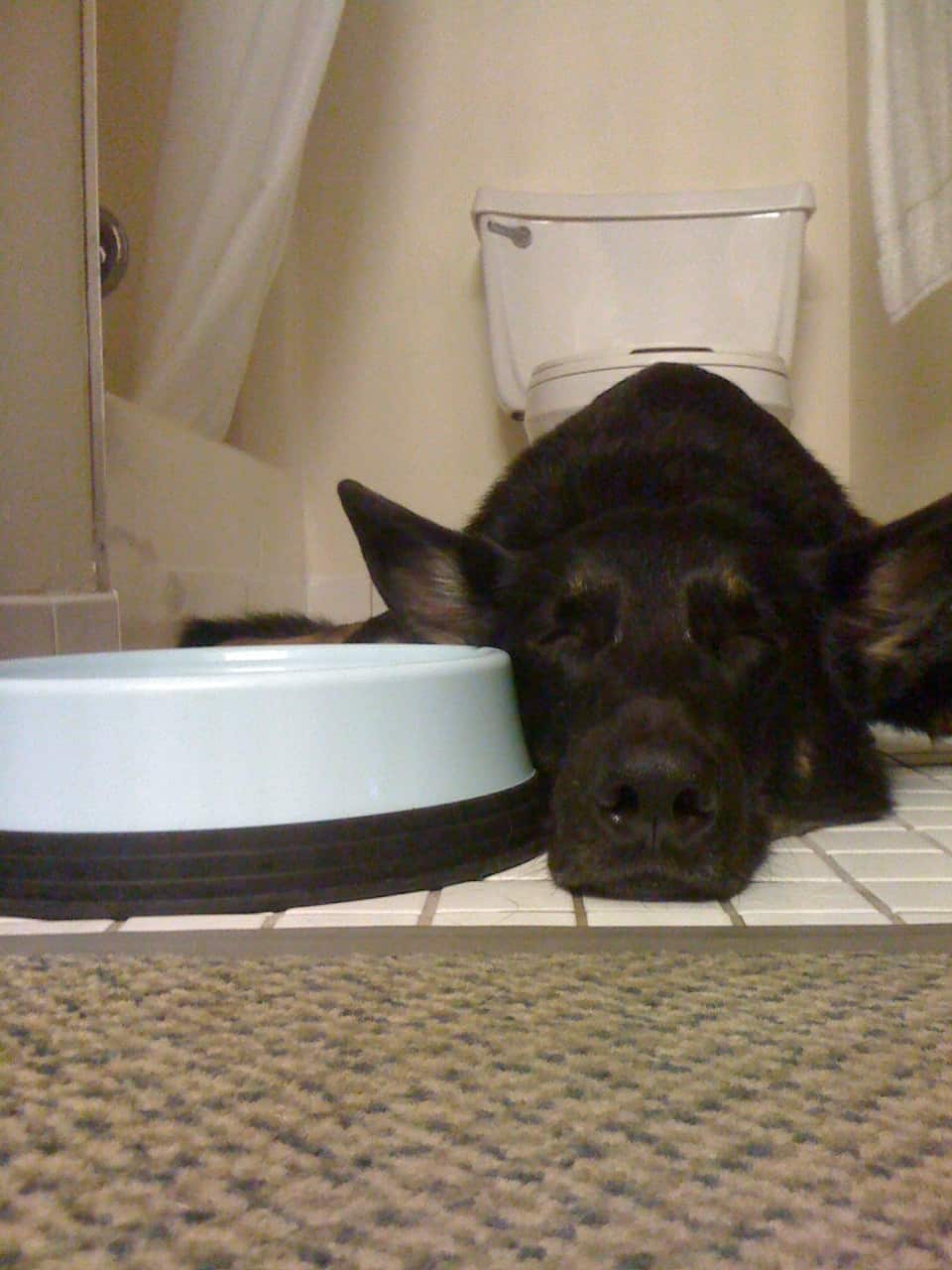
It’s disappointing to have your plans thwarted by the weather. But no activity is worth risking your pet’s health! Dehydration and heat stroke in dogs are serious conditions that no pet owner wants to face.
When it’s too warm to safely play outside, find yourself a fan and enjoy a nice nap together.
